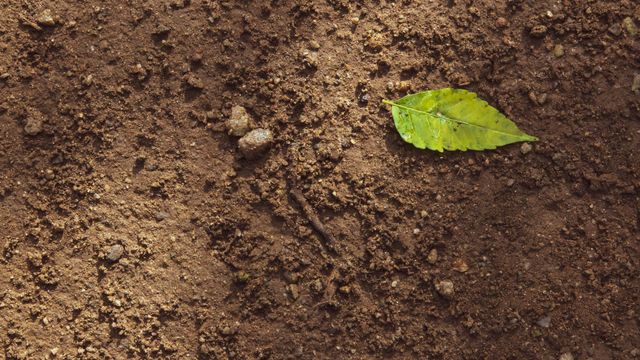Pates recalls 1990s co-op fever and post-2000 crimes
FARGO, N.D. — In the 1990s, U.S. farmers were starting to shake off the farm crisis. At least one reporter was relieved.
Some received debt write-offs (a forgiveness that irked conservative farmers). Farm leaders started promoting a parade of new generation value-added cooperatives, trying to emulate the success of American Crystal Sugar Cooperative in Moorhead, Minnesota. Memorable co-op efforts ranged from
Dakota Growers Pasta Cooperative
, 1990; the
North American Bison Cooperative
, 1993, to
United Spring Wheat Processors
(Spring Wheat Bakers) 1996-2003.
I wrote about differences between U.S. and Canadian marketing systems, and a protest at the border. Not all of the value-added efforts worked. I covered American protests on the Canadian border. In 1992, I was one of the Forum reporters covering Ed Schafer at the North Dakota Republican Convention, as he captured the nomination for governor.
Contributed
In 1993, a big topic was a shift into a wet phase that has persisted until today. The resulting fungal diseases, especially
(“scab”) changed grain production and marketing. Corn and soybeans, and a westward shift for barley, durum and hard red spring wheat, were common topics. Small rail lines were abandoned and revived by short-line railroads. I covered the advent of inland grain terminals, and the rise of rail rates to markets in the Pacific Northwest.
I wrote about NAFTA, the
North American Free Trade Agreement
, passed in 1994, and its hotly debated impacts on farmers.
ADVERTISEMENT
In 1994, I covered the establishment of the
, a corn group that joined with
in Moorhead, then led by mercurial
, and
e in Wahpeton to start ProGold, LLC, a $250 million corn wet milling plant. Within a few months of grinding corn in 1997, the company’s economics forced it to lease the plant to Cargill Inc., which has managed it ever since.
Along the way, at The Forum, in 1995 I investigated members of the North Dakota Ready Militia, a group of like-thinkers with the Michigan Ready Militia that had spawned
, who bombed a federal building in April 1995. I investigated John Vasquez, their “commander,” who had been drummed out of the North Dakota and Minnesota national guards, for lying about his mental health conditions.
Contributed
Also in 1996, I covered Bill Clinton’s second run for president at the Democratic National Convention in Chicago for The Forum. In Chicago, U.S. Rep. Collin Peterson, D-Minnesota, played his guitar in a party for the newly-formed
at the
club. I covered trade issues — the World Trade Organization, the General Agreement on Tariffs and Trade. The North American Free Trade Agreement. (Later, I’d cover Peterson when he became chairman of the U.S. House Agriculture Committee.)
I wrote about the “Freedom to Farm” farm bill that freed farmers to shift to specialty crops like edible beans, sunflowers and canola.
A true oddball story: in 1996, I wrote about the Leppert family of Dickey, North Dakota. Their three sons married three of the grown daughters of the anti-Semitic
, a Missouri cult leader (and acquaintance of Gordon Kahl) who was sent to federal prison for engineering the kidnapping of eight of the 11 children off their farms in LaMoure County, North Dakota. (I called up former colleague Jim Corcoran about that, as he’d written about fringe groups.)
Contributed
The 500-member
, of Carrington, led by agricultural researcher
and president
, was ahead of its time, pressing oilseeds for oil, rather than extracting it with solvents. But in 1999 construction ended in operational failure, when the construction company failed to perform, and the ensuing legal battles with bonding companies.
In 1999-00, I served as president of the North American Agricultural Journalists (NAAJ) — a big honor. I had loved competing for The Forum against the best of the NAAJ. But it was time for me to move on.
At the end of 1999 (after covering the Y2K drama) I resigned from The Forum and joined Agweek.
ADVERTISEMENT
Agweek is all-ag
I started at Agweek on Jan. 3, 2000. The publication was led by Herald Publisher Mike Maidenberg and Pulitzer Prize-winning Editor
.
Contributed
The Herald then was part of Knight-Ridder newspaper chain, based in Miami, Florida. Kevin Bonham was my first editor and was a “management cut” in the first company-wide layoff, and was followed by Kim Deats. The publication had gained national notice for its market coverage.
In 2000, I wrote about Dakota Halal Inc. (later Central Dakota Beef & Sheyenne Valley) a specialty beef packing plant at Harvey, North Dakota, which showed promise and then suddenly lost its markets for Muslim buyers after the Sept. 11, 2001, Islamist attack on the Twin Towers in New York City.
In 2001, I wrote a cover story when Monsanto sued a Cass County farmer, allegedly for saving “Roundup Ready” soybean seed. The case ended in a draw.
Mark Luinenburg
Similarly, I wrote a string of stories involving specialty crop farmers suing chemical maker BASF and the “Poast and PoastPlus” labeling lawsuit, where farmers won $62.5 million for specialty crop growers in a national class-action lawsuit that went to the U.S. Supreme Court.
Besides going to Washington annually for the NAAJ, in 2000 I traveled with the U.S. Grains Council to China, Taiwan and Saudi Arabia.
In January 2002, I wrote “Bank Robbery?” about the infamous Wimbledon (North Dakota) Grain Co. financial meltdown. The case led to a new state law indemnity fund to protect farmers and launched a specialty in covering grain marketing disasters. (Think Anderson Seed, Inc., of Mentor, Minnesota, and H&I Grain of Lake Preston.)
In 2002, I accompanied Eric Aasmundstad, the enterprising president of the North Dakota Farm Bureau, and a delegation led by then-North Dakota Gov. John Hoeven, selling edible beans, wheat and barley (but not “barley malt”).
ADVERTISEMENT
Also in 2002, Duane Huber, the Wimbledon, North Dakota, insurance man (reputedly the largest Farmers Union agent) was convicted of farm program fraud. I interviewed him in federal prison in Duluth as his family carried on with his crop insurance business.
For the brand
In 2006, Forum Communications Co., of Fargo purchased the Grand Forks Herald and Agweek. (FCC had purchased the Worthington Globe, so everything I had worked with was now owned by The Forum.)
I was relieved to again work for a family-owned company that didn’t strive for an unrealistic 25% return-on-equity. The Forum replaced my laptop computer that I’d literally worn through the A-key. I wrote a column on that.
In 2008, I went to Washington, D.C., to cover former Gov. Schafer as he was sworn in as U.S. Secretary of Agriculture in the George W. Bush administration. I sat in the press gallery as Schafer marched in for President George W. Bush’s State of the Union address. In 2011, I traveled with Howard Dahl of Amity Technologies Inc., of Fargo, to Russia and Ukraine.
The years have been filled with stand-out topics — Waters of the United States, the effects of the Conservation Reserve Program.
I covered the case and subsequent bankruptcy of
, the Grafton, North Dakota, farmer, who with partners went farming in Colorado in 2007. It was a complex crop insurance fraud case.
In late 2014, I covered the case of brothers
of Northwood, North Dakota, convicted of applying Rid-X a sewer chemical, onto potatoes to make them melt down in storage and create a storage loss for crop insurance losses.
AgweekTV’s rise
While controversies are memorable, my job was to cover agriculture as it is, which is mostly honest and profitable. I was proud to write about farmers, ranchers and agribusiness leaders creating a life for themselves and producing crops and livestock for our food supply. I initiated the “Crop Stop,” a device for simply dropping in with random farmers on their farms and ranches, asking them how things were going that day.
In 2012,
came from Iowa to sell investments in his fraudulent biofuels deals, and tax credits. One of the stand-out stories was not a criminal, but about mega-farmer
, the once-50,000-acre beet and potato farmer, who went bankrupt with $64 million in debts, including $42 million to a single bank. (The bank accused McMartin of civil fraud, but no charges were filed.)
In 2015, Agweek added AgweekTV, and I became a backpack video journalist. In 2016, I covered the Dakota Access Pipeline protest and interviewed farmer/rancher operators, wearing sidearms.
In 2019,
, the grain cooperative manager from Ashby, Minnesota, went to jail for stealing $5 million from the Ashby, Minnesota, co-op, which assisted his pursuits in big game hunting.
In 2020, I reported on outstanding legal work to right the misdeeds of the
a construction fraud scam, targeting farmers in northwest North Dakota, and wrote about victims.
And the most remarkable for me —
— the 19- to 20-year-old man from Sheyenne and Leeds, North Dakota, who — without training or financing — created a Ponzi scheme, trading $23 million in grain in an 18-month period, owing $11 million. (Hanson worked with Dan Stommes, and his East Central Grain Marketing firm of Sioux Falls, South Dakota, who received commissions on the sales.)
Among the “other tales,” are watchdog stories about regulatory screw ups involving livestock dealers, dicamba herbicide, sunflower screenings contaminated with Palmer amaranth weeds, and grain trading.
File photo
Under our noses
And then there are topics that come out of left field, or right under our noses.
In 2022, I wrote about how a “trust” managed for billionaire
Bill Gates bought North Dakota farmland
owned by the Campbell brothers of Grafton, North Dakota, and how porous the North Dakota anti-corporate farming law seems to be.
Negativity aside, I have written about how farmers and companies have succeeded; how they’ve built strong businesses; how land values and equity positions have grown; and how farmers have become more sophisticated. Ethanol and livestock have grown, hand-in-hand. GPS and other technologies are part of “precision” agriculture, with nanotechnologies and artificial intelligence. Change seems to be accelerating.
Of course I haven’t gotten to every story I should have. I must leave some of them to my able colleagues to pick up as I become less involved. I hope to continue freelancing.
For a few months Barb and I will think about other things. We’ll visit our daughter in England and see the tulip business in Netherlands. We will visit our son (an agricultural economist) in Kentucky. We’ll take a “windjammer” tour off the coast of Maine this summer. Beyond that, we have cousins in Alaska and California. We’ll head to Arizona, to visit. I’ll grow vegetables with immigrants and church friends. In the fall, I’ll go afield a bit more in the Dakotas with Rufus, my hunting dog, and do a little more Minnesota fishing.
I may have a book or two in the works, too. Working title: “Bad Boys of Agriculture, and Other Tales.” I’ll let you know how it’s coming along.



